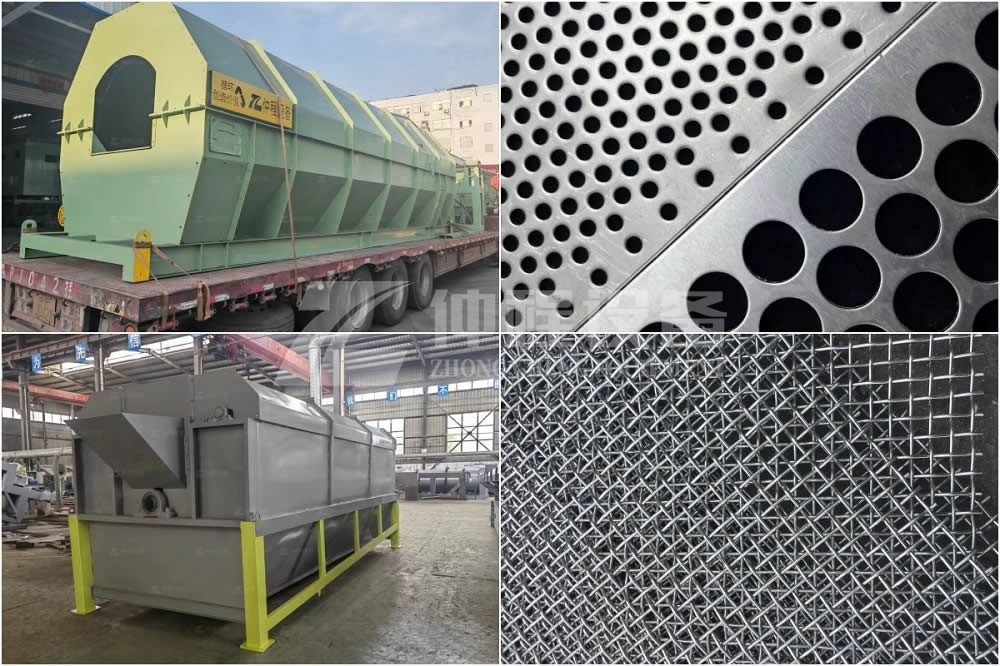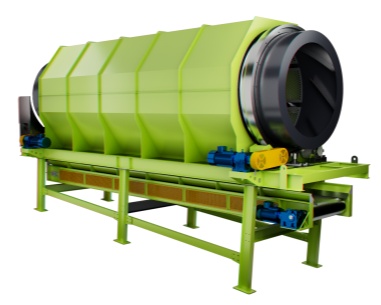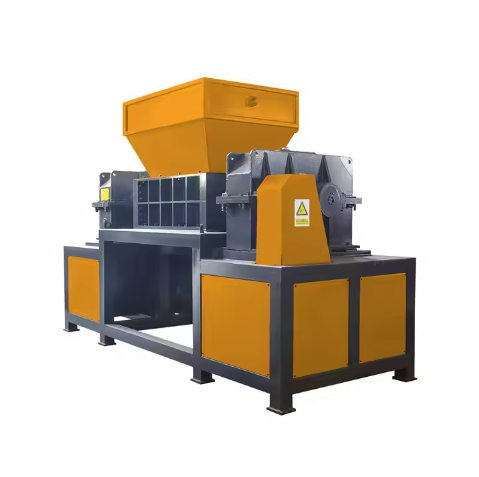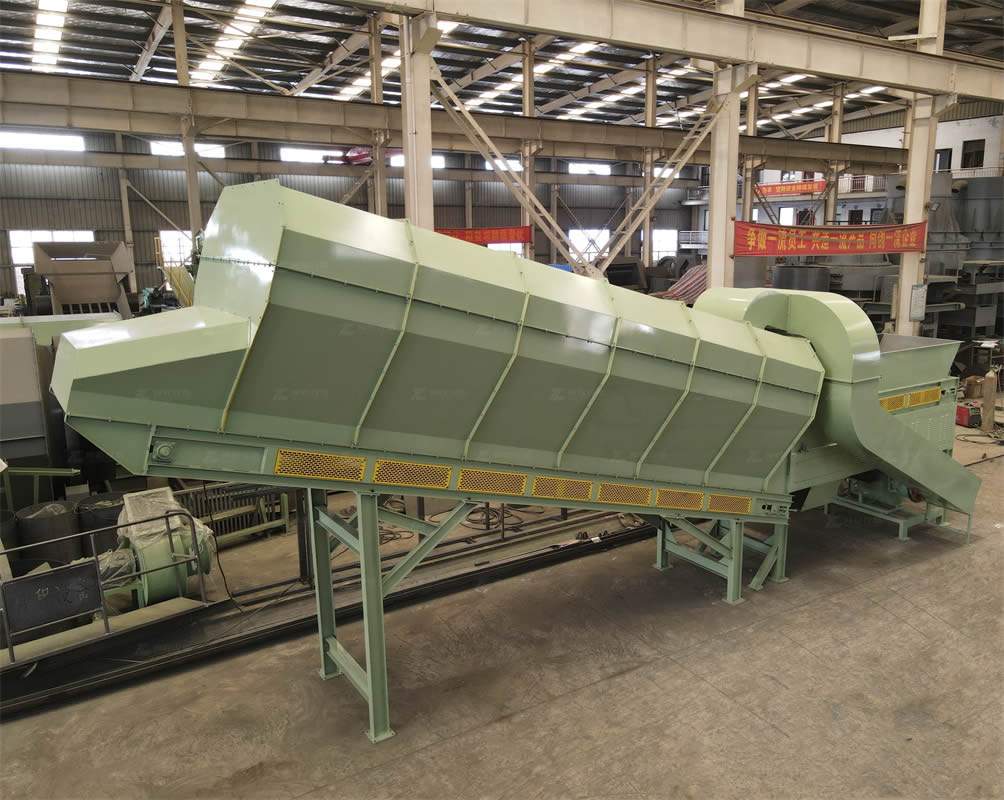Application of Drum Screen in Municipal Solid Waste and Case Study Analysis
Municipal solid waste (MSW) management is a critical aspect of urban environmental sustainability. Among the various technologies employed to process MSW, drum screens play a pivotal role in sorting and separating materials for recycling or disposal. This article explores the application of drum screens within the context of MSW processing and examines a case study highlighting their on-site usage.

The effective management of municipal solid waste is increasingly important as urban populations grow and consumption patterns evolve. The drum screen, an essential piece of equipment in waste sorting facilities, is designed to separate different types of waste based on size, facilitating more efficient recycling processes and reducing the volume of waste sent to landfills.
Application of Drum Screens in Municipal Solid Waste:
1. Size Separation:
Drum screens are cylindrical sieves that rotate slowly while waste passes through them. They effectively sort waste into fractions by size, with larger objects being retained on the surface of the screen and smaller particles falling through. This separation is crucial for downstream processing, such as composting organic matter or preparing material for mechanical-biological treatment.

2. Material Recovery:
By segregating waste streams, drum screens enhance the recovery of recyclable materials like plastics, metals, and paper. These materials can then be processed further for reuse, contributing to resource conservation and economic benefits.
3. Pre-treatment for Other Processes:
Drum screens prepare waste for subsequent treatments, such as incineration or anaerobic digestion, by removing oversized items that could interfere with these processes.
Case Study: On-Site Usage of Drum Screens at a Recycling Facility:
A municipal recycling facility in Zheng zhou faced challenges due to the high volume and mixed nature of incoming waste. To address this issue, the facility installed a drum screen system tailored to its specific needs. The following outcomes were observed:

Enhanced Efficiency: The drum screen significantly improved sorting efficiency, allowing the facility to handle a higher throughput of waste.
Improved Quality of Recyclables: By better separating contaminants from valuable recyclables, the quality of recovered materials increased, leading to higher market value.
Reduced Operational Costs: With less manual sorting required, labor costs decreased, and the automated process reduced wear and tear on machinery used in later stages of waste processing. Environmental Benefits: The facility saw a reduction in landfill contributions and an increase in recycling rates, positively impacting local environmental goals.
| Model | Length Range | Segment No. | Aperture Size | Power (Kw) | Inclined Angle | Max. Material Size | Rotating Speed(rpm) |
| ZCφ600 | 2-4m | 1-2 | ≤30mm | 2.2-3 | 0-7° | 60mm | 12-18 |
| ZCφ800 | 2-5m | 1-3 | ≤50mm | 3-5.5 | 0-7° | 100mm | 12-18 |
| ZCφ1000 | 2-6m | 1-4 | ≤100mm | 4-11 | 0-7° | 150mm | 10-18 |
| ZCφ1200 | 3-8m | 1-4 | ≤150mm | 5.5-18.5 | 0-7° | 200mm | 9-15 |
| ZCφ1500 | 3-10m | 1-5 | ≤200mm | 7.5-22 | 0-7° | 250mm | 9-15 |
| ZCφ1800 | 4-12m | 1-5 | ≤220mm | 7.5-22 | 0-7° | 270mm | 8-15 |
| ZCφ2000 | 5-15m | 1-5 | ≤250mm | 11-30 | 0-7° | 300mm | 8-12 |
| ZCφ2500 | 5-18m | 1-6 | ≤300mm | 11-30 | 0-7° | 350mm | 8-12 |
The application of drum screens in municipal solid waste processing exemplifies how technology can be leveraged to improve environmental outcomes while also providing economic advantages. As cities continue to expand, the integration of advanced screening technologies will remain vital for sustainable waste management practices.
-
 Trommel screenTrommel screen, also known as drum screens, are widely used in various industries for sorting and separating materials.Get Quote
Trommel screenTrommel screen, also known as drum screens, are widely used in various industries for sorting and separating materials.Get Quote -
 Crop straw double shaft shreddApplications:Biomass Energy Production: Shredded straw can be used as a feedstock for bioenergy plants to produce electricity or heat.Livestock Feed: Reduced-si...Get Quote
Crop straw double shaft shreddApplications:Biomass Energy Production: Shredded straw can be used as a feedstock for bioenergy plants to produce electricity or heat.Livestock Feed: Reduced-si...Get Quote -
 Zhongcheng Air Drum SeparatorAir drum separators effectively separate lightweight materials (e.g., plastics, paper) from heavier materials (e.g., metals, glass). This high efficiency is cru...Get Quote
Zhongcheng Air Drum SeparatorAir drum separators effectively separate lightweight materials (e.g., plastics, paper) from heavier materials (e.g., metals, glass). This high efficiency is cru...Get Quote
-
2023-01-12Waste Baler For MSWHigh density solid waste balers are the final step before sending waste to landfill. Horizontal balers designed and manufactured for this difficult job and prov...
-
2023-01-12Conveyor BeltGarbage conveyor/Trash conveyor belt system is a processing line to classify paper, plastic, metal, glass, and organic matter and realize the recycling of rubb...
-
2023-01-12Apron FeedersApron Feeder is a conveyor manufactured from steel plates driven by steel chains wearing on steel surfaces. They are a robust design manufactured for durability...
-
2024-07-10msw trommel screen for waste recycling machineThis equipment is suitable for the particle classification process in all walks of life:The equipment is simple, easy to operate,and can be operated with a larg...
-
2024-06-20Wind Separator Technology for Lightweight Materials in Urban Solid Wastewind separator, also known as air separation, is a sophisticated and efficient method of sorting that utilizes air as the separating medium.



